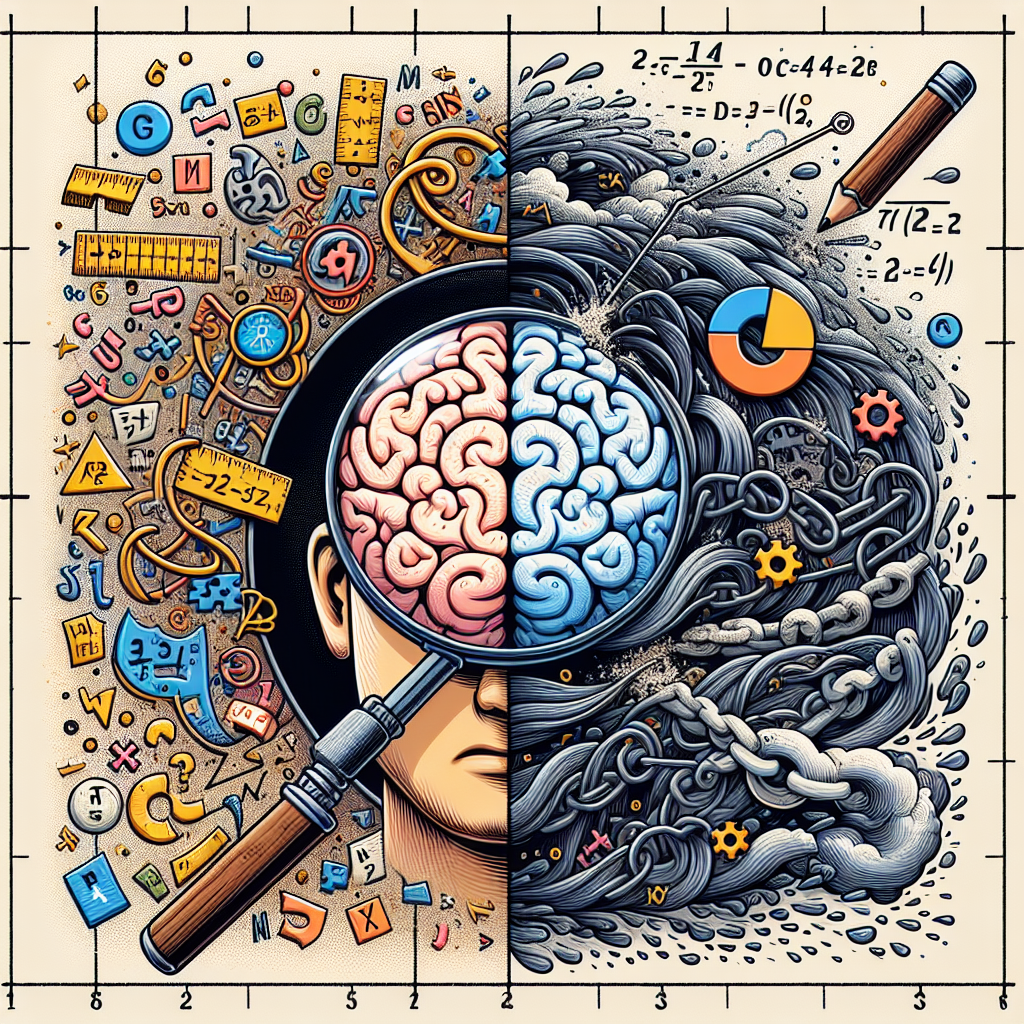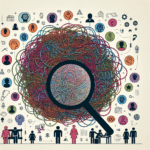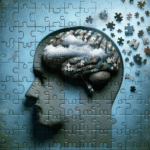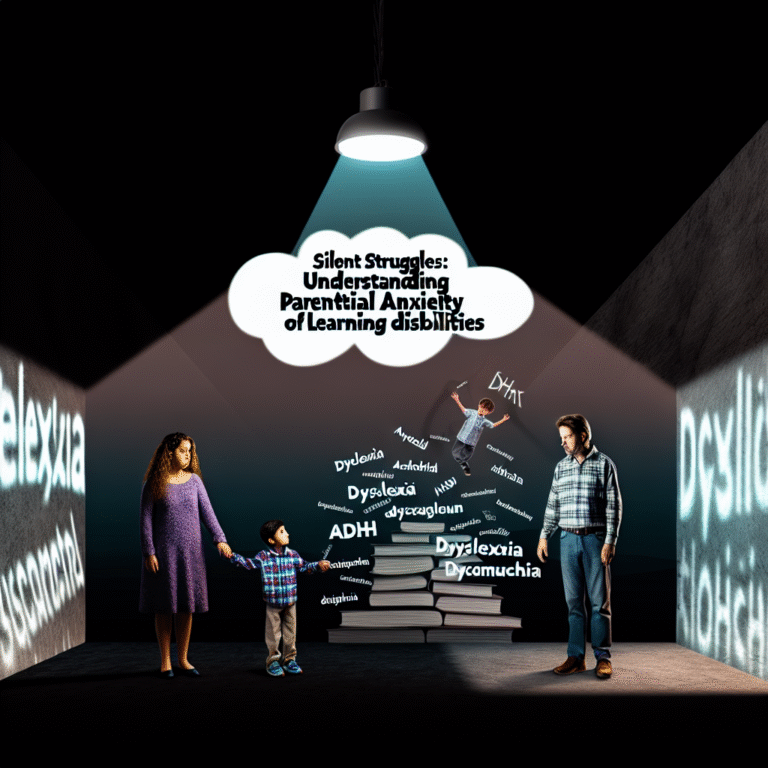
From Confusion to Clarity: The Essential Process of Diagnosing Dyscalculia
Introduction
In a world driven by numbers—from managing personal finances to succeeding in academic environments—the struggle to comprehend quantities can feel bewildering. For many, including those with dyscalculia, this confusion can morph into heightened anxiety and frustration. Dyscalculia, often overshadowed by its more recognized counterparts like dyslexia, is a specific learning disability that affects mathematical understanding and processing.
Understanding the nuances of diagnosing dyscalculia paves the way from confusion to clarity. This guide aims to illuminate that process, providing compelling case studies and essential insights. By knowing what to expect, we can empower ourselves, educators, and parents to approach the diagnosis and support of this condition more effectively.
Understanding Dyscalculia
What Is Dyscalculia?
Dyscalculia is characterized by persistent difficulties in learning or comprehending arithmetic. Individuals may struggle with basic numerical concepts, number sense, and mathematical reasoning. They may find it challenging to perform calculations, understand spatial relationships, or measure quantities accurately.
Key Symptoms
- Difficulty understanding numbers and their relationships
- Problems with counting, including skipping numbers
- Struggles with memorizing basic math facts
- Difficulty understanding math symbols and vocabulary
- Anxiety related to math tasks
The Importance of Early Diagnosis
Early identification is vital. Without intervention, students with dyscalculia may experience academic setbacks, negative self-esteem, and anxiety. The journey from confusion to clarity starts with awareness, acceptance, and action.
Prevalence
Research indicates that dyscalculia affects 3% to 6% of the population. Despite this prevalence, many remain undiagnosed, leading to a lack of appropriate support. Many parents and educators may confuse dyscalculia with general math anxiety, thus delaying the diagnosis.
The Diagnostic Process: From Confusion to Clarity
Step 1: Initial Observations
Typically, the journey begins with observations made by parents, teachers, or clinicians. Key indicators may include:
- Frequent mistakes in math assignments
- Refusal to engage in math activities
- Difficulty following multi-step instructions
Example Case Study: Alex, a 9-year-old, consistently lagged behind peers in math. His teacher noted that he often skipped numbers when counting and expressed confusion when faced with basic addition tasks. Following these observations, a meeting with Alex’s parents was scheduled.
Step 2: Consult with Professionals
Once concerns are raised, it’s crucial to consult educational psychologists or specialists in learning disabilities. They can provide valuable insights into the child’s learning profile. Parents should seek a professional who understands dyscalculia and its impact.
Step 3: Comprehensive Assessment
This stage, a vital part of the process from confusion to clarity, involves a series of tests. The assessment typically includes:
- Cognitive Assessments: Evaluate understanding of mathematical concepts.
- Achievement Tests: Measure the level of proficiency in mathematics.
- Observational Assessments: Include input from teachers, parents, and the child.
Table: Common Assessment Tools for Dyscalculia
| Assessment Type | Purpose |
|---|---|
| Cognitive Assessments | Understand cognitive strengths/weaknesses |
| Achievement Tests | Evaluate mathematics proficiency |
| Observational Assessments | Gather qualitative data from multiple sources |
Step 4: Interpretation of Results
Following assessments, professionals analyze results to confirm or rule out dyscalculia. Factors often considered include the discrepancy between cognitive ability and actual math performance.
Step 5: Developing an Intervention Plan
Once dyscalculia is diagnosed, it’s essential to formulate an intervention plan tailored to the individual’s needs. This plan typically includes:
- Targeted math instruction
- Use of manipulatives to visualize concepts
- Technology-assisted learning tools
Example Case Study: After Alex’s diagnosis, an individualized education plan (IEP) was created to incorporate visual aids like number lines and math games designed for experiential learning.
Building a Supportive Environment
Encouraging a Positive Mindset
Viewing dyscalculia as just another way of learning rather than a limitation can foster resilience and positivity. Teaching students about their brains and how they learn can build confidence.
Involving the Family
Family engagement is crucial in the journey from confusion to clarity. Parents should be equipped with strategies to assist at home. Skills such as connecting math to everyday activities (e.g., cooking, budgeting) can promote practical learning.
Utilizing Technology
Many apps and software tailored for students with learning disabilities can help make math more interactive and engaging. Platforms such as Khan Academy or Mathway can reinforce learning in a supportive way.
Case Studies: Real-World Applications
Case Study 1: Emily’s Journey
Emily, a high school sophomore, faced challenges with geometry concepts despite thriving in art classes. After receiving a dyscalculia diagnosis, her school implemented a teaching strategy that incorporated visual arts into geometry. Her comprehension and interest in math flourished.
Case Study 2: Mark’s Transformation
Mark, diagnosed in middle school, struggled with basic math and developed a dread for math-related activities. With consistent support, including a dedicated tutor, he began to see mathematical concepts through real-life applications. This pivot led to not only improvement in math scores but also a newfound joy in the subject.
Analysis: Both cases illuminate how recognizing dyscalculia early can lead to significant academic and emotional benefits, demonstrating the importance of the diagnostic process.
Conclusion
From confusion to clarity—understanding the process of diagnosing dyscalculia is the first vital step toward providing much-needed support. With awareness, early intervention, and ongoing support, individuals with dyscalculia can thrive both academically and personally.
Each case illustrates the importance of collaboration among parents, educators, and professionals. As we strive for clarity, let’s build an inclusive environment where every learner can discover their strengths and potential.
FAQs
What is dyscalculia?
Dyscalculia is a specific learning disability affecting the ability to understand and work with numbers.How can I tell if my child has dyscalculia?
Watch for signs like difficulty with basic mathematical concepts, anxiety during math activities, and inconsistencies in school performance.What assessments are used for diagnosing dyscalculia?
A combination of cognitive assessments, achievement tests, and observational assessments is typically utilized.Can dyscalculia be managed?
Yes, with early diagnosis and tailored intervention plans, individuals can learn strategies to cope with dyscalculia.Are there specific teaching methods for dyscalculia?
Teaching methods such as using visual aids, manipulatives, and technology-based resources can greatly benefit those with dyscalculia.- What support systems are available for parents of children with dyscalculia?
Parents can seek guidance from educational psychologists, support groups, and online resources dedicated to learning disabilities.
By navigating the path from confusion to clarity regarding dyscalculia, we empower individuals affected by this learning difficulty to succeed, transforming challenges into opportunities.















